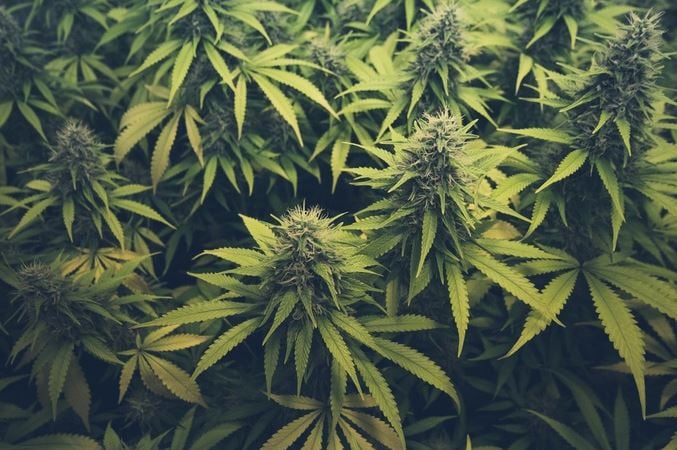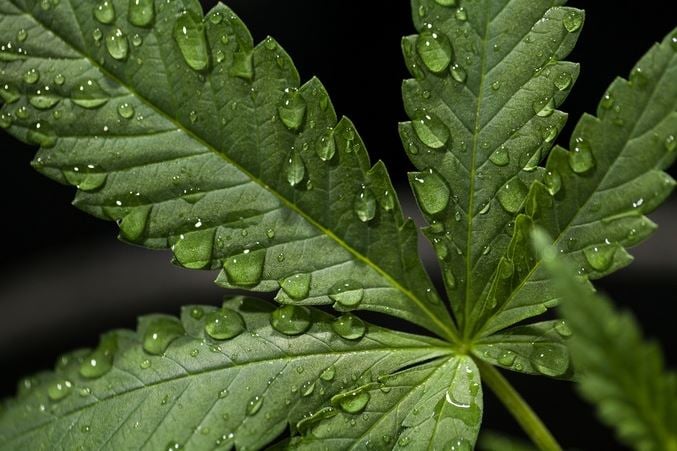A Guide To Watering Your Cannabis Crop, Indoors And Outside
Published :
Jul 24, 2017
Categories :
Cannabis cultivation

Watering cannabis needs to be carried out correctly in order to ensure crop health and maximise yield. Growers should look out for signs of overwatering and underwatering to prevent unnecessary damage to their crop.
With cannabis prohibition slowly coming to a close, an eruption in weed innovation, technology and business has occurred. When it comes to growing, it can be easy to get lost in the many methods, techniques and products now available for purchase. In doing so, people may pay less attention to the more basic, yet absolutely fundamental aspects of cultivating a healthy crop of cannabis.
Watering your plants is one such necessity. It represents a simple process that influences the success or failure of your crop. In order to maximise the health and vitality of your herb, you must consider factors such as watering frequency and quantity. Not to mention, different methods apply to indoor grows vs outdoor, as well as smaller operations vs large-scale commercial endeavors.
WHEN TO WATER YOUR PLANTS
Concerning what time is best to water your cannabis crop, there are many unique opinions on how to optimise the schedule. Some growers believe that watering in the daytime is preferable, claiming that water is most effectively used in the presence of light. People also argue that nighttime watering promotes dampness in the soil, which contributes to mould growth.
Regardless of what time of day you choose to water your crop, there are some objective signs to help you determine how much water is needed. One of the more popular practices states that the best time to water is when the top inch of the soil or growing medium has dried out sufficiently. This is a surefire way to avoid overwatering. Slightly underwatering will likely be less harmful than the alternative as roots need to extract air and excessive dampness can cause a plant to weaken.

USE MODERATION WHEN WATERING YOUR CROP
It is possible to both underwater and overwater your plants and both of these outcomes will result in specific symptoms. Either of these possibilities may lead to reduced yields or even the downfall of an entire crop. For these reasons, it is important to closely monitor the condition of your plants and the substrate being used.
AVOID OVERWATERING
Accidentally overwatering your plants will occur if you believe the first sign of dryness to be an indication that your plant is in desperate need of some water.
Overwatering occurs when your crop receives more water than the roots can handle. When you do water, exercise with caution. It is advised to water until a temporary reservoir pools on top of the soil and a decent amount of runoff drains out of the bottom of the pot. Monitoring runoff has multiple benefits and helps you to observe any drainage issues. Instigating a small amount of water runoff can help to flush out excess natural salts from within the soil.
A telltale sign that you are overwatering your plants is drooping or curling of fan leaves. This makes it obvious that something is off with your plant’s health. If overwatering starts to reach a chronic state, your plants may start to show symptoms such as yellowing leaves and other signs nutritional deficiency.
EDEMA AND ROOT ROT
Further problems that can occur when plants are overwatered is a condition called edema. This occurs when a plant uptakes more water than it requires, causing cells within the plant to swell, or even rupture. In these cases, lesions and scar tissue may be evident on your plants, along with indentations on the top of leaves.
When the soil is constantly saturated with water, it essentially suffocates the roots. This may cause them to drown and start to rot, leading to the condition known as root rot. This is the result of a fungal disease that turns roots grey and slimy. If root rot sets in, it is advisable to remove them from a shared growing space and immediately stop any chance of it spreading.
AVOID UNDERWATERING
You can tell that your plants have been underwatered when you reach into a pot, only to grab a handful of bone dry soil. Because water fulfills vital physiological functions within plants, serious underwatering can have a detrimental effect on your plant’s health and potentially decrease its ability to yield flowers. Drooping and wilting is also a sign of underwatering. Leaves may also appear thin and yellow due to lack of fluids. After sustained periods of underwatering, plants will become limp and look as though they are about to collapse. Consistent underwatering will ultimately culminate in a demolished crop.
CONSIDER LIGHTING
Upgrading your lighting system mid-way through a grow cycle may result in your plants being worse for wear. For instance, if you choose to bring lights closer to plants or increase exposure, your crop may end up suffering from underwatering. After all, when plants are exposed to greater amounts of light, they naturally require more water.
POTTING IS IMPORTANT
The size of the pot used to plant your cannabis is extremely important to the success of your overall crop. Pots should be selected in proportion to the size and age of each plant. Small and young plants should be kept in smaller pots until their roots develop within the soil. Pot sizes should then be upgraded as the plant continues to stretch and grow. Allowing a plant's roots to fill up the space is a good way to avoid overwatering. If a small plant inhabits a large pot, its roots might not uptake all of the water, causing excess liquid to pool in the bottom of the pot to damaging results.
WATERING METHODS
The most obvious and simple way to water your plants is to use jugs.
Alternatively, drip irrigation can be used if growing outdoors. This system consists of pipes that run along the length of a garden bed. The pipe features holes next to the stem of each plant. Water drips slowly out of each opening, according to the amount of pressure present within the system. This slow drip allows for a consistent supply of water to reach the plant, keeping the soil moist but not overly damp.
Hydroponic systems are another great way to ensure adequate water supply. Hydroponics actually keep the plant’s roots suspended in water for most of the grow cycle using a substrate like clay or coco coir. Pumps can be used to supply the roots with air and nutrients can be added to the reservoir to feed the plants.
The wick method of watering can also be used as somewhat of an automatic watering procedure. Nylon wicks originating from a reservoir can be placed in the soil, gradually administering water to the plants.









































